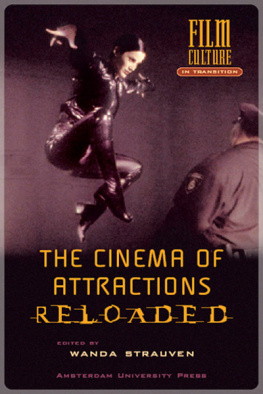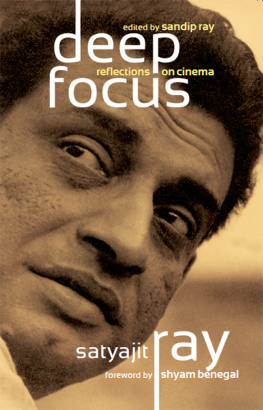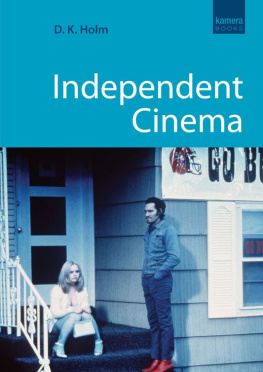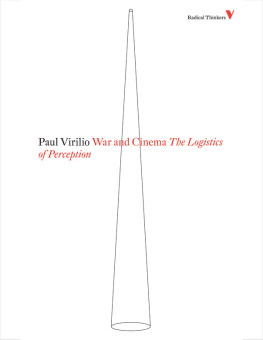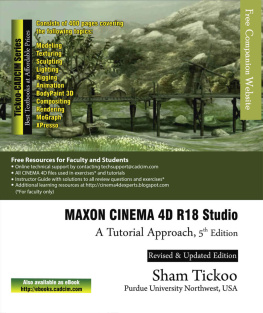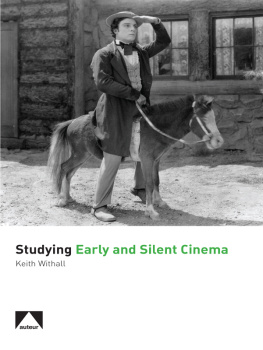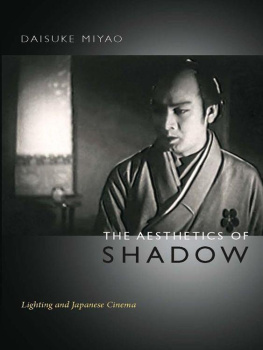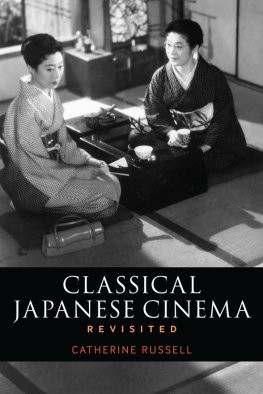Strauven - The cinema of attractions reloaded
Here you can read online Strauven - The cinema of attractions reloaded full text of the book (entire story) in english for free. Download pdf and epub, get meaning, cover and reviews about this ebook. City: Amsterdam, year: 2006;2011, publisher: Amsterdam University Press, genre: Romance novel. Description of the work, (preface) as well as reviews are available. Best literature library LitArk.com created for fans of good reading and offers a wide selection of genres:
Romance novel
Science fiction
Adventure
Detective
Science
History
Home and family
Prose
Art
Politics
Computer
Non-fiction
Religion
Business
Children
Humor
Choose a favorite category and find really read worthwhile books. Enjoy immersion in the world of imagination, feel the emotions of the characters or learn something new for yourself, make an fascinating discovery.
- Book:The cinema of attractions reloaded
- Author:
- Publisher:Amsterdam University Press
- Genre:
- Year:2006;2011
- City:Amsterdam
- Rating:5 / 5
- Favourites:Add to favourites
- Your mark:
- 100
- 1
- 2
- 3
- 4
- 5
The cinema of attractions reloaded: summary, description and annotation
We offer to read an annotation, description, summary or preface (depends on what the author of the book "The cinema of attractions reloaded" wrote himself). If you haven't found the necessary information about the book — write in the comments, we will try to find it.
The cinema of attractions reloaded — read online for free the complete book (whole text) full work
Below is the text of the book, divided by pages. System saving the place of the last page read, allows you to conveniently read the book "The cinema of attractions reloaded" online for free, without having to search again every time where you left off. Put a bookmark, and you can go to the page where you finished reading at any time.
Font size:
Interval:
Bookmark:
Attraction Practices through History
[The Avant-Garde: section 1]
Charles Musser
We are in the midst of a multiyear centennial celebration of cinemas beginnings. Motion pictures had their first premire just over one hundred years ago, on 9 May 1893, when George M. Hopkins gave a lecture on Thomas A. Edisons new motion picture system, the kinetoscope and kinetograph camera, at the Brooklyn Institute of Arts and Science. When the lecture concluded, at least two twenty-second films were shown: BLACKSMITHING SCENE and HORSE SHOEING. Four hundred people in attendance lined up in front of Edisons peep-hole kinetoscope and one by one looked into the viewer and saw one of these two films. From this date until sometime in 1896, there were a series of moments in which motion pictures cumulatively entered the public sphere and had their initial impact on culture. If the Lumires represent a high point in this process, particularly from a European perspective, as historians we have learned not only from research but from personal experience that insights and achievements often occur more or less simultaneously and independently in different places.
Those who study early cinema are also celebrating another anniversary, that of the 1978 Brighton conference sponsored by FIAF (Fdration Internationale des Archives du Film). That conference was really the first time that film scholars from Europe and North America could look systematically at most of the surviving fiction films made between 1900 and 1906. It brought together scholars who had been working in relative isolation and created a critical mass for intellectual inquiry. Moreover, it helped to inaugurate a new relationship between the archives and the larger scholarly community (a relationship todays graduate students might easily take for granted). These terms are early cinema, primitive cinema, and cinema of attractions.
At this moment in our study of the pre-Griffith (before 1908-1909) and preclassical cinema (before 1920), it seems to me imperative to reflect upon these differences. Can apparent disagreements be clarified or resolved? What, in fact, is at stake? This is not an easy task, particularly since each of these terms is used by numerous scholars who frequently dont mean the same thing. Given the practical limits of this article, I want to focus on one of these terms, cinema of attractions.
In 1986, my colleague Tom Gunning made an important and highly influential intervention in the film studies field with the publication of his article The Cinema of Attractions: Early Cinema, Its Spectator and the Avant-Garde. Gunning, in conjunction with Andr Gaudreault, coined a phrase, the cinema of attractions, that has enjoyed great popularity and provided important new insights. Until about 1906, Gunning argues, filmmakers used cinema less as a way to tell stories than as a way of presenting views to an audience. In a paragraph added when the essay was republished in Thomas Elsaessers anthology, Gunning wrote:
To summarize, the cinema of attractions directly solicits spectator attention, inciting visual curiosity, and supplying pleasure through an exciting spectacle a unique event, whether fictional or documentary, that is of interest in itself. The attraction to be displayed may also be of a cinematic nature, such as the early close-ups just described, or trick films in which a cinematic manipulation (slow motion, reverse motion, substitution, multiple exposure) provide the films novelty. Fictional situations tend to be restricted to gags, vaudeville numbers or recreations of shocking or curious incidents (executions, current events). It is the direct address of the audience, in which an attraction is offered to the spectator by a cinema showman, that defines this approach to filmmaking. Theatrical display dominates over narrative absorption, emphasizing the direct stimulation of shock or surprise at the expense of unfolding a story or creating a diegetic universe.
And he remarks in a subsequent article:
If we consider the sorts of attractions I have examined here in order to investigate their temporality certain insights into the metapsychology of the spectator of early cinema suggest themselves. The sudden flash (or equal sudden curtailing) of an erotic spectacle, the burst into motion of a terroristic locomotive, or the rhythm of appearance, transformation and sudden appearance that rule a magic film, all invoke a spectator
Gunning borrowed the term attractions from Soviet filmmaker Sergei Eisenstein, who proposed a kind of cinema based on the montage of attractions, a juxtaposition or collision of facts or shocks (isolated as individual shots) that had a calculated effect on the audience.
In his several essays on this topic, Gunning examines an array of relevant single-shot films commonly found in the repertoire of pre-1903 cinema: onrushing trains, disrobing women, acrobatic feats, and so forth. I find Gunnings discussion illuminating and helpful when applied to this important strand of cinema, which flourished in vaudeville houses prior to the rise of the story film in 1903-1904; these pre-1903 films were brief and often non-narrative, emphasizing variety and display. It is when he claims both that cinema of attractions characterizes all of pre-1903 cinema and continues to be a dominant feature of the post-1903 period, that I find myself in sharp disagreement. These disagreements have been implicitly acknowledged in Gunnings own work. In emphasizing cinemas non-narrative capacities, Gunning takes aim at a group of historians who examined early cinema from a different perspective.
The history of early cinema, like the history of cinema generally, has been written and theorized under the hegemony of narrative films. Early filmmakers like Smith, Mlis and Porter have been studied primarily from the viewpoint of their contribution to film as a storytelling medium, particularly the evolution of narrative editing. Although such approaches are not totally misguided, they are one-sided and potentially distort both the work of these filmmakers and the actual forces shaping cinema before 1906.
Although Gunning does not specify these historians, by the fall of 1986, I can only assume he was referring to the work of such scholars as Nol Burch, David Bordwell, Kristin Thompson, Janet Staiger, myself, Martin Sopocy, and even his collaborator Andr Gaudreault in short to the wave of post-Brighton scholarship that was then coming out in article form. Gunnings statement reflects differences evident since those initial Brighton essays.
Although Gunnings characterization of my work is basically accurate, I do not want to accept it completely. Even before the publication of Gunnings Brighton essay on the non-continuous style of early film, I had published an article that explored the uses of variety programming for short films, though it also contrasted such practices with the grouping of films by genre or subject And to the extent that Gunning cited and used Allen and saw cinema of attractions as dominant until about 1906, his argument was premised on some of the very work against which I necessarily argued.
In Gunnings initial formulation, the relations between narrative and attractions in early cinema take three somewhat different forms:
A. Films that are essentially non-narrative. These lack a beginning, middle, and end, even as they provide moments of display, shock, or pleasure. Two potentially familiar examples suffice: first, the non-fiction actuality S.S. COPTIC RUNNING AGAINST THE STORM (1898) is a single-shot film taken from the deck of an ocean vessel as it plows into one billowing wave after another; second, in OLD MAID IN THE DRAWING ROOM (1901, copyrighted as OLD MAID IN A HORSE CAR), female impersonator Gilbert Sarony dressed as a the giddy girl talks directly to the camera in a medium close-up. In each film we can find no recognizable change or progression. The waves are no different at the end of S.S. COPTIC than at the beginning, and Sarony goes through a non-stop repertoire of gestures that seem to lead us nowhere. In the first film the audience is placed in a position of apparent danger as we vicariously experience the shot. There is a discrepancy between the position of the seated spectator seeking pleasure and amusement in a theater and the cameramans point of view and experience. The spectator becomes a surrogate passenger who feels the tension between the safety and comfort of his or her seat and the dangers of the milieu in which he or she is transported as hypothetical traveler. Mobilizing this absence of presence is one way in which S.S. COPTIC RUNNING AGAINST THE STORM functions as an attraction.
Next pageFont size:
Interval:
Bookmark:
Similar books «The cinema of attractions reloaded»
Look at similar books to The cinema of attractions reloaded. We have selected literature similar in name and meaning in the hope of providing readers with more options to find new, interesting, not yet read works.
Discussion, reviews of the book The cinema of attractions reloaded and just readers' own opinions. Leave your comments, write what you think about the work, its meaning or the main characters. Specify what exactly you liked and what you didn't like, and why you think so.

